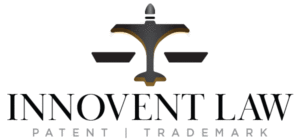USPTO Trademark process explained using case studies.
by Karima Gulick, registered patent and intellectual property attorney.
In my experience as an attorney dedicated to the nuances of trademark law, understanding the USPTO trademark registration process is indispensable for any business aiming to solidify its market presence.
Here, I’ll share insights through the lens of two hypothetical businesses: XYZ, a nascent electronic products seller in California, and RPA Automations, an emerging service provider set to expand across the United States.
Join me as we dissect the key phases of the trademark journey, examining the challenges and strategies that could make or break a business’s efforts to secure its brand.
Introduction to Case Studies
XYZ Electronics is a small business that has been selling online through Etsy and Facebook Market for a year. As they prepare to open a physical shop in Los Angeles, securing their brand name through trademark registration is paramount to avoid any legal issues and establish their market presence firmly.
RPA Automations offers specialized automation services to industries across the United States. Operating initially as freelancers, they now aim to formalize their operations into an agency. A registered trademark will protect their service mark across all 50 states, supporting their national expansion.

Step 1: Trademark Search
For XYZ Electronics, the first step is conducting a comprehensive trademark search. Given the crowded market of electronic goods, the risk of existing similar trademarks is high. They must ensure that their chosen brand name doesn’t infringe on any existing trademarks to avoid legal disputes that could delay their store opening.
Similarly, RPA Automations must perform a diligent search. Their service mark must be unique not just locally but across the entire U.S. to support their expansion plans. Engaging with a professional for a thorough search ensures that both companies can move forward with confidence.
Check out the USPTO Application Requeriments.
Step 2: Filing the Application
XYZ must file a trademark application specifying their intent to use the trademark for retail electronic store services. The application needs to specify the goods they intend to sell, including the upcoming physical store in Los Angeles.
RPA Automations, on the other hand, will file an application under the service mark category, clearly stating their business of providing industry automation services. Accuracy in describing the nature of services is crucial to avoid issues with the USPTO.
Apply here: USPTO Trademark Application.
Step 3: Responding to USPTO Office Actions
The USPTO may issue an Office Action to either XYZ or RPA Automations, which could include requests for clarification or rejection due to potential conflicts. Both companies must be ready to respond promptly and adequately to address any concerns raised by the USPTO to keep their applications moving forward. In some cases, the Examining Attorney at the USPTO reviewing the application would suggest hiring a trademark attorney to help understand the issues and overcome the rejections.
Step 4: Publication for Opposition
Once the applications pass preliminary review, they will be published in the USPTO’s Official Gazette. This publication initiates the opposition period, within 30 days of the said publication, third parties can file objections to the registration of the marks. XYZ and RPA must monitor this period closely and be prepared to defend their trademarks if opposed.
Step 5: Notice of Allowance (Only for Intent to Use)
Once the opposition period passes without any opposition being filed against their mark, XYZ will be issued a Notice of Allowance (NOA) for their mark stating that they need to provide a statement of use of their mark being used in commerce.
They have 6 months from the NOA issuance date to produce proof of use, alternatively if they require more time to launch, they can file up to 5 extensions, which will give them 6 months per extension, to file the evidence of use.
Step 6: Registration
If no oppositions are filed and their statement of use is accepted by the Examiner, or if they successfully overcome any challenges, both XYZ and RPA Automations’ trademarks evidently will be registered. This registration will enhance their legal protections and allow the use of the ® symbol, signaling their registered status and deterring potential infringers.

Protecting Your Brand.
By examining the USPTO trademark process through XYZ and RPA Automations, it’s clear that each step, from initial search to final registration, requires meticulous planning and awareness of potential hurdles. For brands and companies looking to navigate this terrain, understanding these steps and preparing for possible challenges is key to achieving a successful trademark registration.

